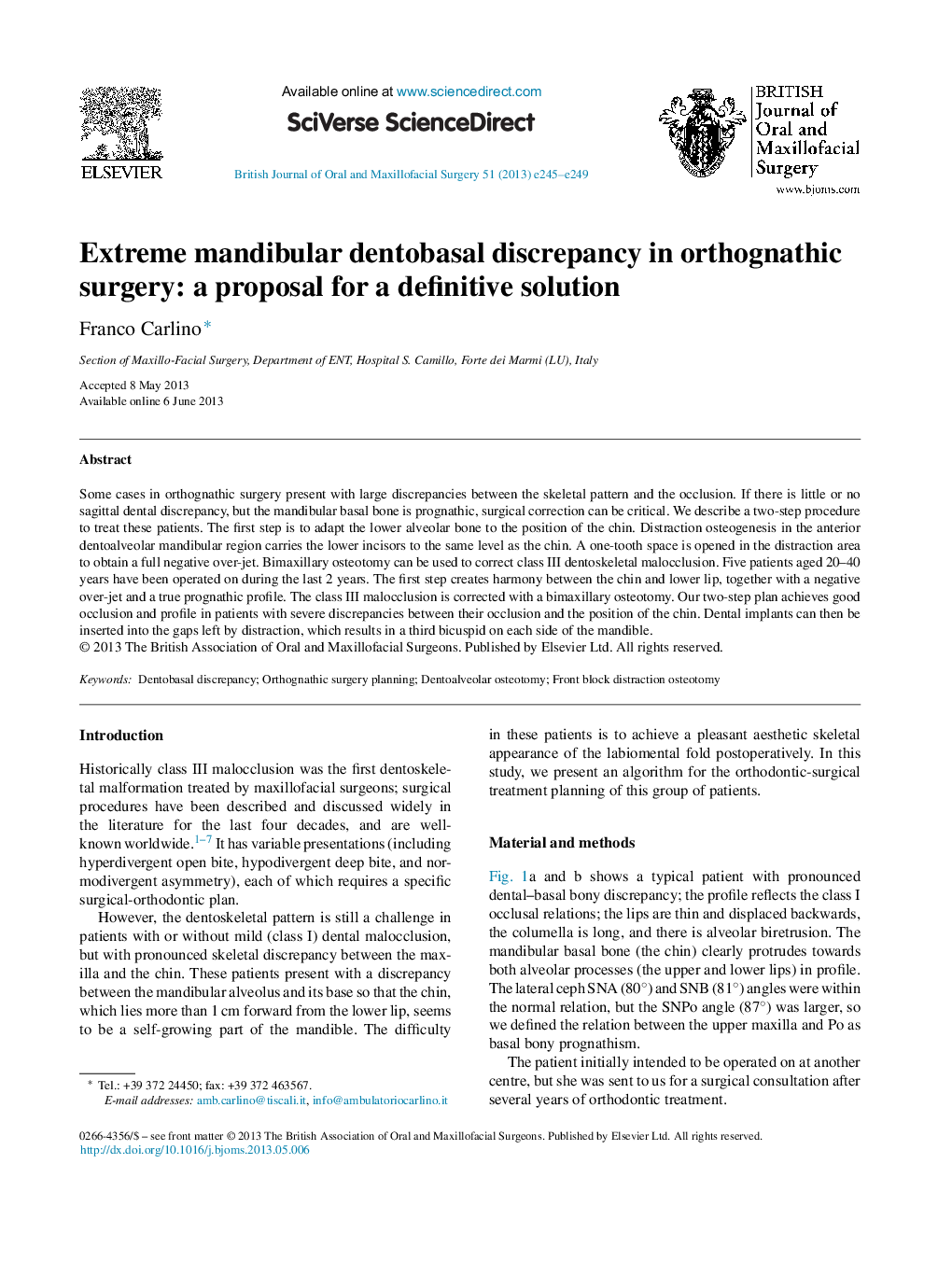| Article ID | Journal | Published Year | Pages | File Type |
|---|---|---|---|---|
| 3123739 | British Journal of Oral and Maxillofacial Surgery | 2013 | 5 Pages |
Some cases in orthognathic surgery present with large discrepancies between the skeletal pattern and the occlusion. If there is little or no sagittal dental discrepancy, but the mandibular basal bone is prognathic, surgical correction can be critical. We describe a two-step procedure to treat these patients. The first step is to adapt the lower alveolar bone to the position of the chin. Distraction osteogenesis in the anterior dentoalveolar mandibular region carries the lower incisors to the same level as the chin. A one-tooth space is opened in the distraction area to obtain a full negative over-jet. Bimaxillary osteotomy can be used to correct class III dentoskeletal malocclusion. Five patients aged 20–40 years have been operated on during the last 2 years. The first step creates harmony between the chin and lower lip, together with a negative over-jet and a true prognathic profile. The class III malocclusion is corrected with a bimaxillary osteotomy. Our two-step plan achieves good occlusion and profile in patients with severe discrepancies between their occlusion and the position of the chin. Dental implants can then be inserted into the gaps left by distraction, which results in a third bicuspid on each side of the mandible.
